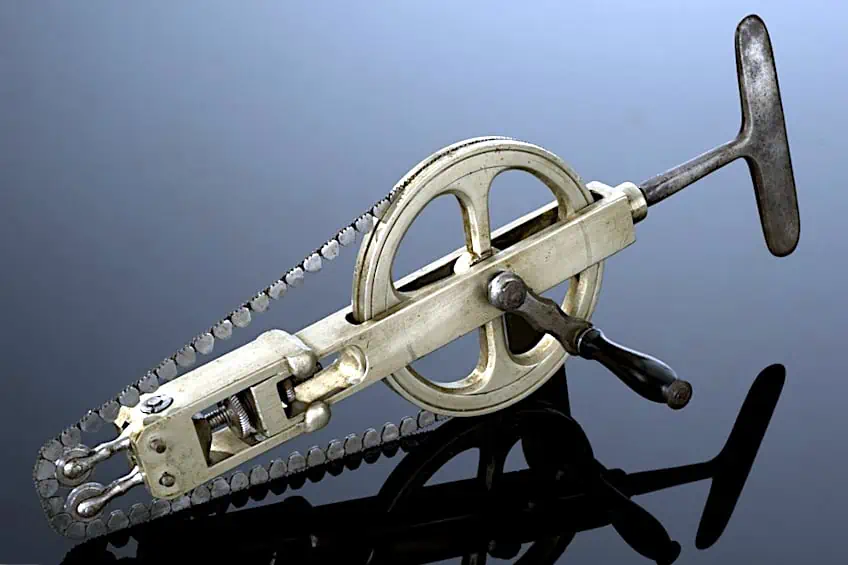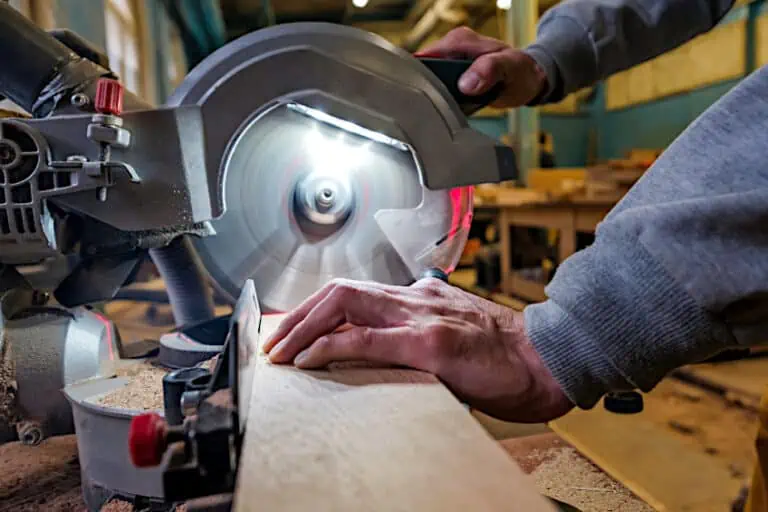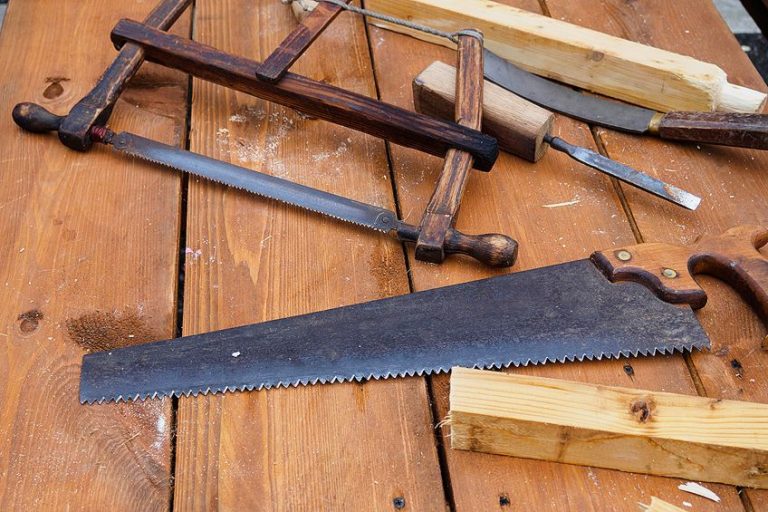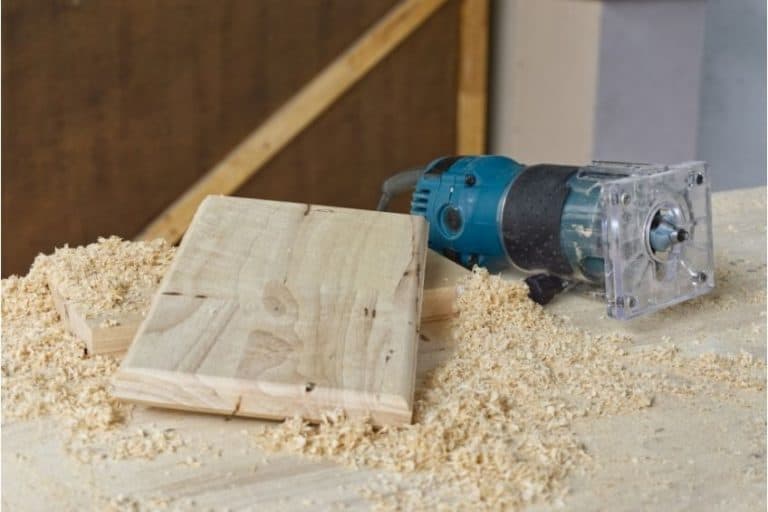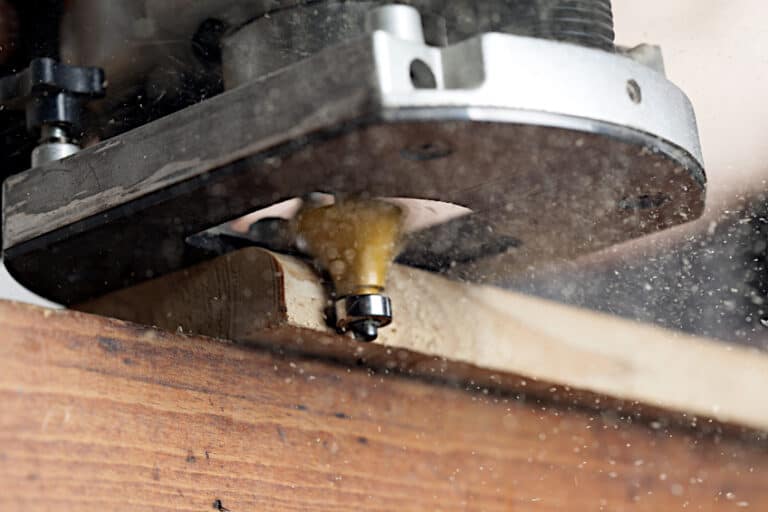Why Were Chainsaws Invented? – A Short History of Chainsaws
Chainsaws are super useful tools that have revolutionized a number of industries, but they haven’t always been around. Have you ever wondered how they came to be? If you have, we’ve prepared a short history of the chainsaw below, including what was used before its invention, what early chainsaws looked like, and what it eventually evolved into. Let’s explore why chainsaws were invented and how they evolved into the tools we use today.
Why Were Chainsaws Invented?
Chainsaws were invented as a means to improve the production process. They were invented during the 1920s, an era when older forms of technology were being retrofitted with newer technologies to improve speed and efficiency. With the advent of the automobile and readily available electricity, many aspiring minds were asking how these revolutionary power sources could be integrated into existing infrastructure.
Operating a manual saw requires a lot of energy, and cutting large trees and/or other materials sometimes requires two people with monstrously large saws.
Engines are capable of doing a lot of work, so why not find a way to make a little internal combustion engine do the work of two men? As far back as the Renaissance, inventors such as Leonardo da Vinci tried to find faster and easier means to transform trees into timber by mechanical means. Mechanization saves you manpower and improves the speed of production, all while reducing worker fatigue and the probability of injury due to extraneous labor. The internal combustion chainsaw wasn’t the first attempt at a powered saw, in fact, there are examples of steam-powered and even gear-operated chainsaw attempts throughout history too.
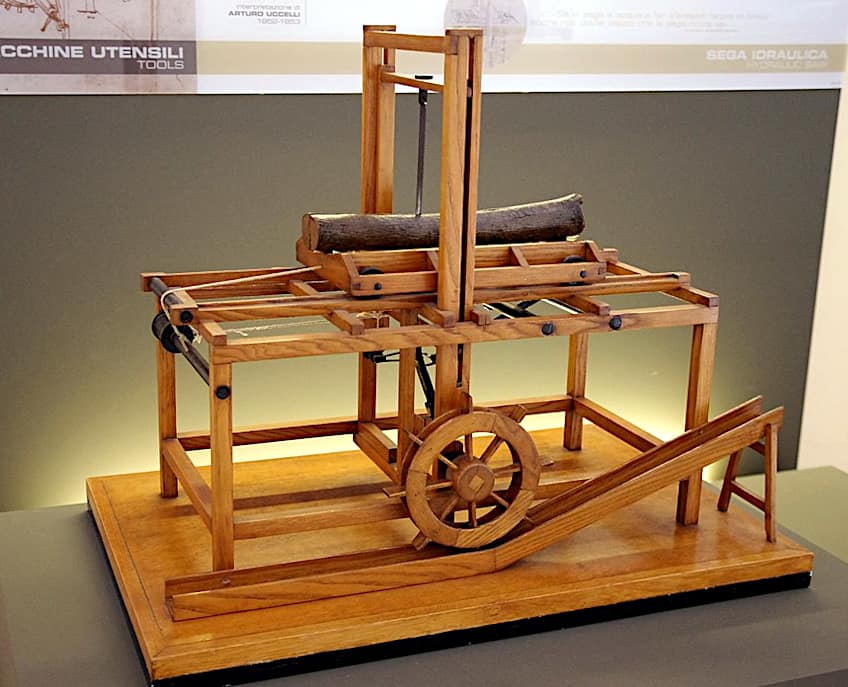 Contemporary museum model of a hydraulic saw derived from a design by Leonardo da Vinci from a sketchbook dated between 1478 and 1480; Jakub Hałun, CC BY-SA 4.0, via Wikimedia Commons
Contemporary museum model of a hydraulic saw derived from a design by Leonardo da Vinci from a sketchbook dated between 1478 and 1480; Jakub Hałun, CC BY-SA 4.0, via Wikimedia Commons
Essentially, like most inventions, the invention of the chainsaw was a response to a need in society. The goal was to make people’s lives easier while allowing us to produce products and services more easily. As time went on the design of the chainsaw would be improved and refined to the highly efficient (and far safer) design we know today.
The History of the Chainsaw
As we mentioned previously, the chainsaw went through a couple of iterations before it became what we know today. Below we’ll have a look at how the chainsaw evolved into what we know today from its humble manual origins as a handsaw and perhaps what we can expect in the future from this revolutionary tool.
The Handsaw and Axe
Before the advent of the ribbed blade, axes were the primary cutting tools for many woodsmen and craftsmen. They were an effective way of felling trees and cutting through various materials without the need for intricate engineering or precision craftsmanship. A sharp axe swung with sufficient power can do many jobs, but eventually, things had to change for the better.
As far as we know, the first saws were invented around 5000 BCE by Germanic tribes of the time.
They fashioned small teeth into little moon-shaped flint-like objects that could be used for everyday applications, but whether they were actually used to cut wood or other common applications for saws is largely unknown. While tooth enamel is pretty strong, it isn’t quite as strong as metal. Therefore, when copper was the staple in toolmaking until iron became the standard for hard-wearing tools.
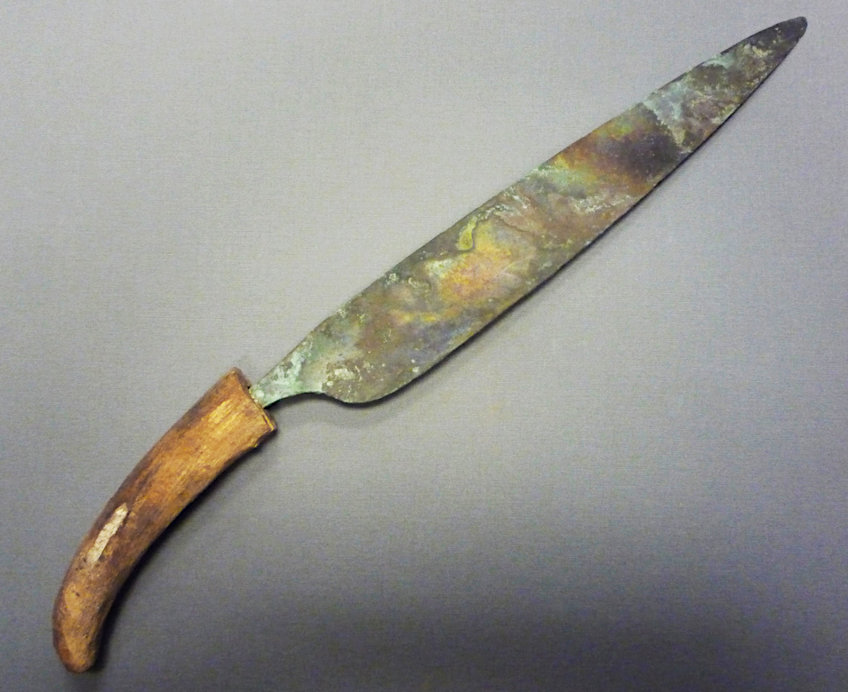 Bronze/copper alloy carpenter saw from a foundation deposit at the temple of Hatshepsut, Egypt (c. 1479-1458 BCE); Metropolitan Museum of Art, CC0, via Wikimedia Commons
Bronze/copper alloy carpenter saw from a foundation deposit at the temple of Hatshepsut, Egypt (c. 1479-1458 BCE); Metropolitan Museum of Art, CC0, via Wikimedia Commons
Bronze implements were still used but for more delicate applications like tool making and surgery where precision and reliability were key. Keep in mind that while metal saws were in circulation within skilled occupations like medicine and artisanry they still weren’t present in the logging or tree felling industries due to them being expensive (almost six times more expensive than the axe).
However, things would soon change again, as even though self-employed lumberjacks could not afford to purchase saws, employers could, turning them from self-employed individuals into wage workers.
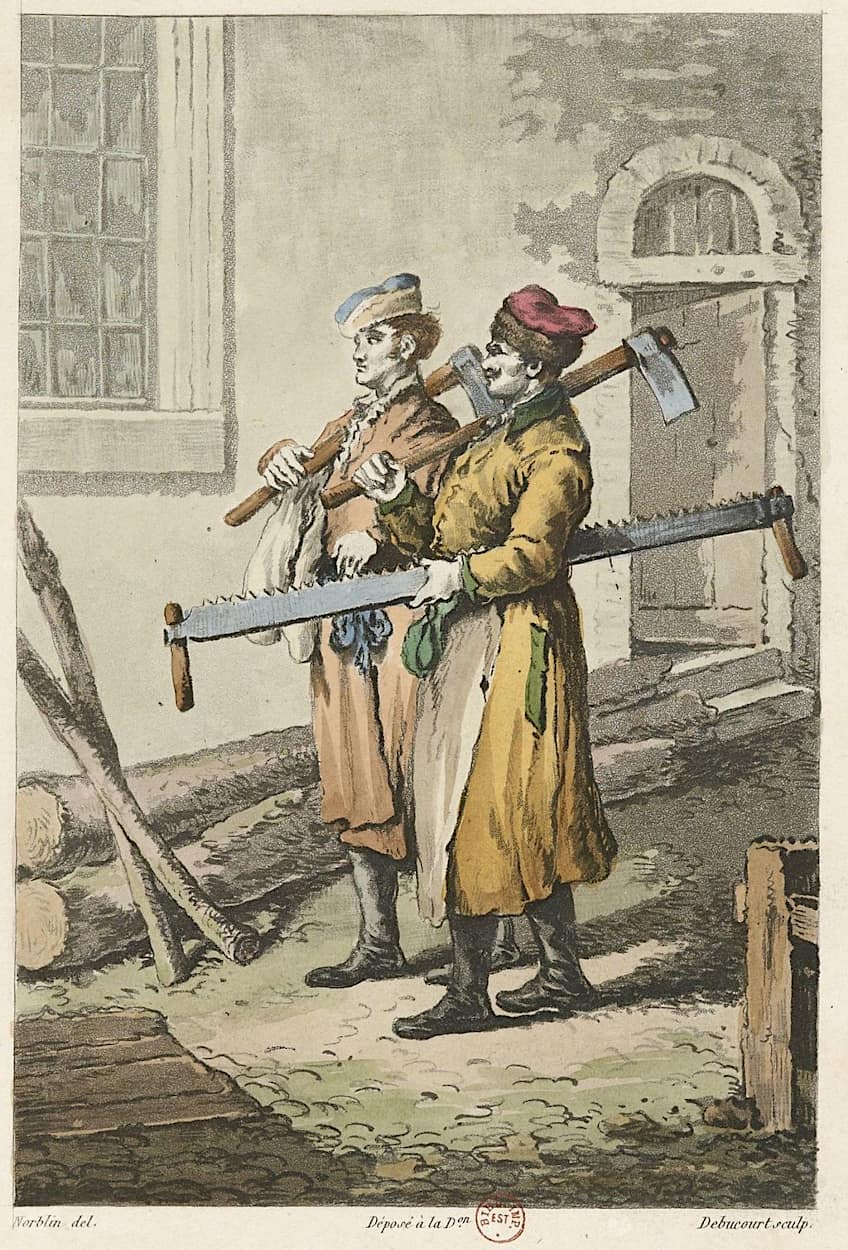 Lumberjacks by Jean-Pierre Norblin de la Gourdaune (1817); Jean-Pierre Norblin de La Gourdaine, Public domain, via Wikimedia Commons
Lumberjacks by Jean-Pierre Norblin de la Gourdaune (1817); Jean-Pierre Norblin de La Gourdaine, Public domain, via Wikimedia Commons
This trend was pervasive throughout 18th-century Europe as saws streamlined the production process, as the world became even more industrialized some enterprising (and innovative) individuals would make many attempts at producing a motorized saw.
The Motorized Saw
In the 19th century, motorized saws were available, but they were big, heavy, unpredictable, and inconsistent. Some of them like the drag saw and even the steam-powered motorized saw are still quite popular historical tools, but they are often shunned as being impractical replacements for the good old-fashioned hand saw of the time.
It wasn’t until the 1920s that some of the first reliable and readily available chainsaws were made. There are several contributors in the field, namely Wolf (from the USA), Westfeldt (from Sweden), and Stihl (from Germany), with Stihl being not only the largest but the oldest chainsaw manufacturer in the entire world to this date.
The goal of each manufacturer was to create a chainsaw that could be operated by a single person. This would increase production output, and profits, reduce fatigue, and generally make the wood felling industry a more accessible one. While their chainsaws were now more reliable, they sought to refine and improve their designs over the years. Things really kicked off around the 1920s, but just because these chainsaws were relatively reliable didn’t mean they were easy to use. During this era refined metals were expensive to manufacture and implement, which means motorized saws at the time were often heavy and required two people to operate effectively.
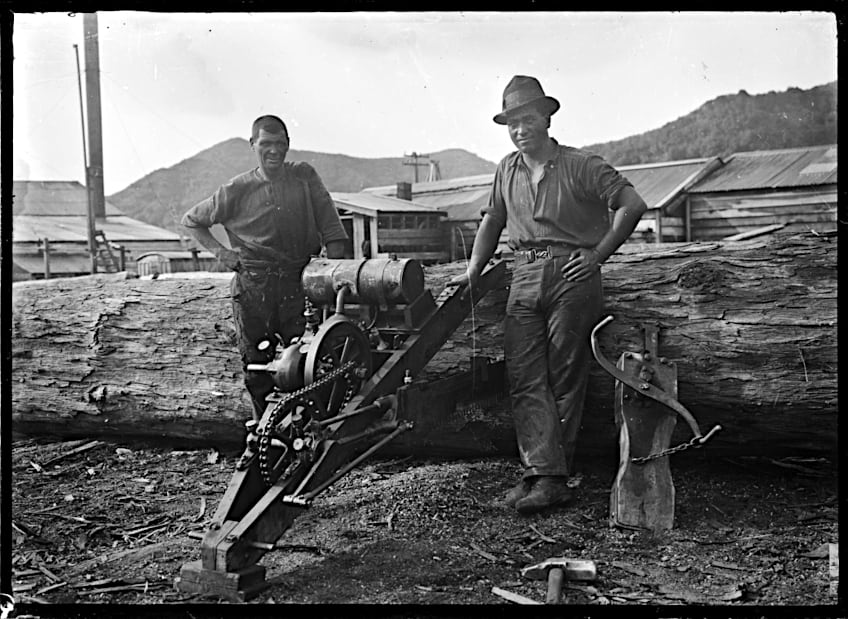 Photograph of sawmill employees with a motorized cross-cut Wade saw taken by Albert Percy Godber (1920); Godber, Albert Percy, 1875-1949, Public domain, via Wikimedia Commons
Photograph of sawmill employees with a motorized cross-cut Wade saw taken by Albert Percy Godber (1920); Godber, Albert Percy, 1875-1949, Public domain, via Wikimedia Commons
It took decades for the chainsaw to become readily usable, so even though they weren’t super-efficient in the manpower department this didn’t deter manufacturers from developing a chainsaw to replace their 60kg (120 lbs) two-person chainsaws with the ones we all know and love today. It would take another decade or two, but eventually, they pulled it off. By the 1950s while everyone was enjoying the music of Elvis and the sensational success of the hula-hoop, manufacturers would finally introduce the one-man chainsaw. This device weighed a whopping 12kg (26lbs) and couldn’t have come at a better time for the lumber and forestry industry.
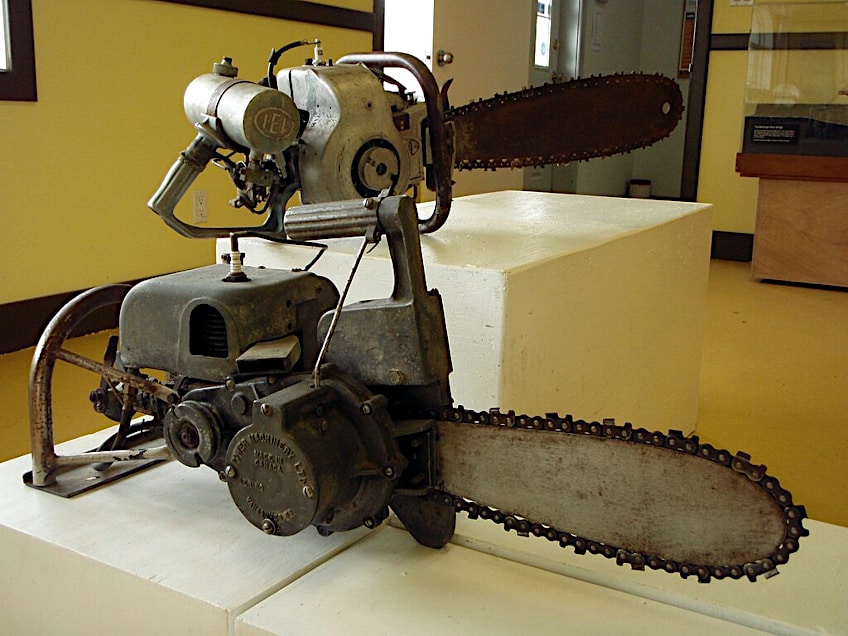 Early chainsaws manufactured by Power Machinery (foreground) and IEL (background); JMEG, CC BY 2.0, via Wikimedia Commons
Early chainsaws manufactured by Power Machinery (foreground) and IEL (background); JMEG, CC BY 2.0, via Wikimedia Commons
There was a huge shortage of workers at the time, and it was hoped that the one-man chainsaw would entice young people to join the industry thanks to how much easier the one-man chainsaw made the job. This worked somewhat, but thanks to the efficiency of the chainsaw, piecework rates dropped, which saw some lumber workers return to using the axe and handsaw.
| Company | Year | Improvement |
| Stihl | 1926 | First Electric Chainsaw |
| Dolmar | 1927 | First initial combustion chainsaw |
| IEL | 1950 | First one-man chainsaw |
| Stihl | 1964 | First anti-vibration chainsaw |
| Husqvarna | 1972 | First chain brake |
| Stihl | 1982 | First auto chain brake (quick stop) |
| Stihl | 1989 | First catalyzer |
| Stihl | 1991 | First easy-start chainsaw |
Modern Chainsaws
Modern chainsaws are a culmination of all the chainsaw prototypes and predecessors that came before it. Incorporating a chain driven by an electrical or internal combustion engine, these chainsaws are available in many sizes to accommodate the type of work they will be used for and the size of the person who intends to operate them.
Chainsaws now have a host of safety features like guards for your hands and arms, and some even have overload functionalities to avoid catastrophic failure of the motor.
They are all operated with two hands, one to lift the chainsaw and the other to control the throttle/cutting speed. Modern chainsaws also have lubrication reservoirs to ensure the chain never seizes.
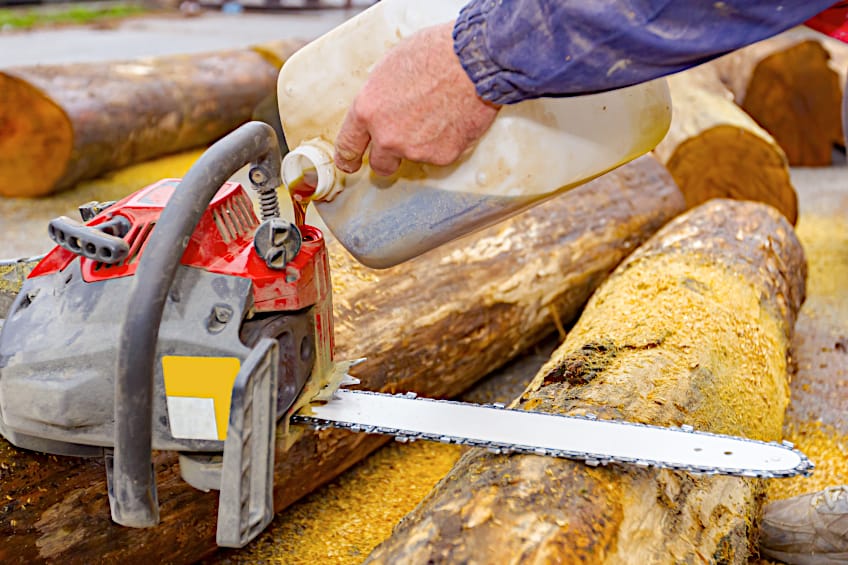
Modern chainsaws can be finely tuned to ensure the best performance. Everything from the type of chain to the lubrication speed and even the cutting speed can be adjusted for the best approach possible. Most parts of modern chainsaws are modular in design, meaning that they can easily be removed and replaced if damaged or worn.
Chainsaws these days are capable of cutting through pretty much any material if you have the right type of blade and enough power.
A good example is how masonry saws are capable of cutting through solid concrete and brick like a hot knife through butter, which is all thanks to their diamond-tipped blades and extremely fast cutting speed.
Laser Guided Saws
Just like modern measuring devices make use of lasers to determine distance and direction, cutting-edge chainsaws make use of laser modules that allow you to determine the depth and length of your cut. They can also indicate which direction your tree will fall once it’s been cut, decreasing the probability of accidents occurring and allowing you to plan ahead!
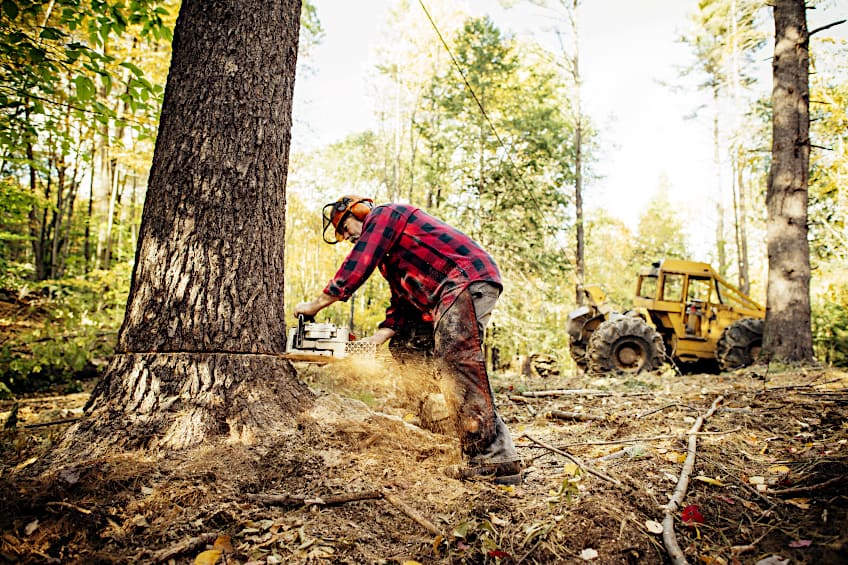
Most laser guide units are not integrated parts of the modern chainsaw but are instead add-ons that can be purchased. These units are also usually brand-specific which means that you’ll probably be locked into a certain brand and/or model of chainsaw if you’d like to get your hands on one.
These are just some of the ways modern chainsaw manufacturers are implementing new and exciting technologies to streamline the cutting process.
What Were Chainsaws First Used For?
Chainsaws were not always intended for use on wood. In fact, the first functional chainsaws were hand-crank operated, and designed for use on human bone. Two Scottish doctors, John Aitken and James Jeffray invented a medical tool to be used in performing a procedure known as a symphysiotomy. This flexible saw was used to divide the cartilage of the pelvis where childbirth was hindered due to mechanical obstruction. This device was further developed into a hand-cranked saw with a bladed chain by German doctor Bernhard Heine in 1830 who named his invention the osteotome.
Featuring guards around the blades to protect soft tissue, this early chainsaw became widely used during orthopedic surgery, where it spared the patient the impact of the hammers and chisels that had been used until then.
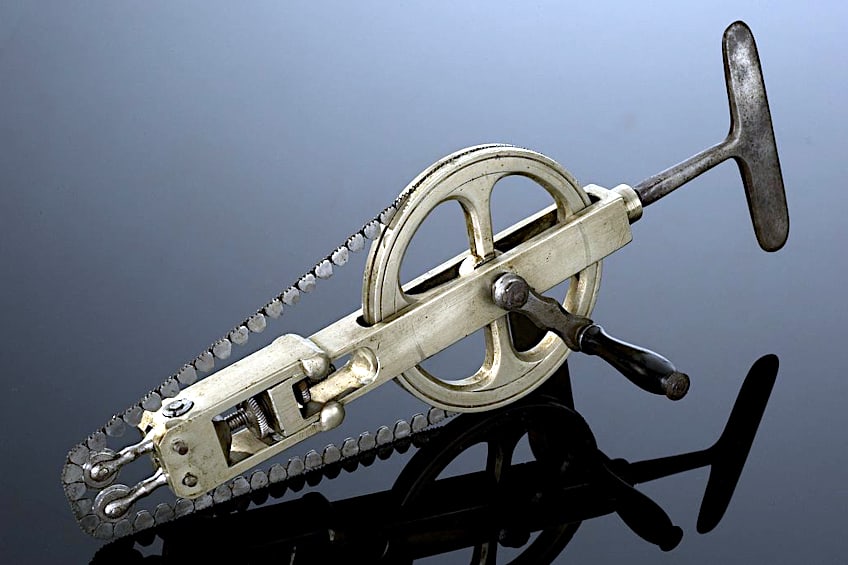 Chainsaw-like skull saw (manufactured between 1831 and 1870); See page for author, CC BY 4.0, via Wikimedia Commons
Chainsaw-like skull saw (manufactured between 1831 and 1870); See page for author, CC BY 4.0, via Wikimedia Commons
Similar hand-cranked medical chainsaw-like devices became popular with surgeons during the mid-19th century. As you might have guessed, the chainsaw did not remain an industry-standard in medicine forever. What were the hand-operated chainsaws replaced with, you ask? Well, wire saws seemed more appropriate as they were able to cut more precisely, and while they weren’t as inherently firm as the hand-cranked chainsaws, they were able to cut through both bone and muscle very easily. Sometimes they were used to remove pieces of diseased bone too!
Important Chainsaws Throughout History
As you can see the creation of the chainsaw was a slow one, but incremental improvements over time have led it to become one of the most widely used tools in modern times. To give you a good idea of just how far the evolution of the chainsaw has come, let’s have a look at some of the important ancestors of the chainsaw throughout history.
The Osteotome (1830)
This medical chainsaw consisted of two metal plates, a few gears, a watch chain, and two handles. It was invented by Bernhard Heine, a German doctor who pioneered the device in 1830 with relative success according to the medical standards of the time.
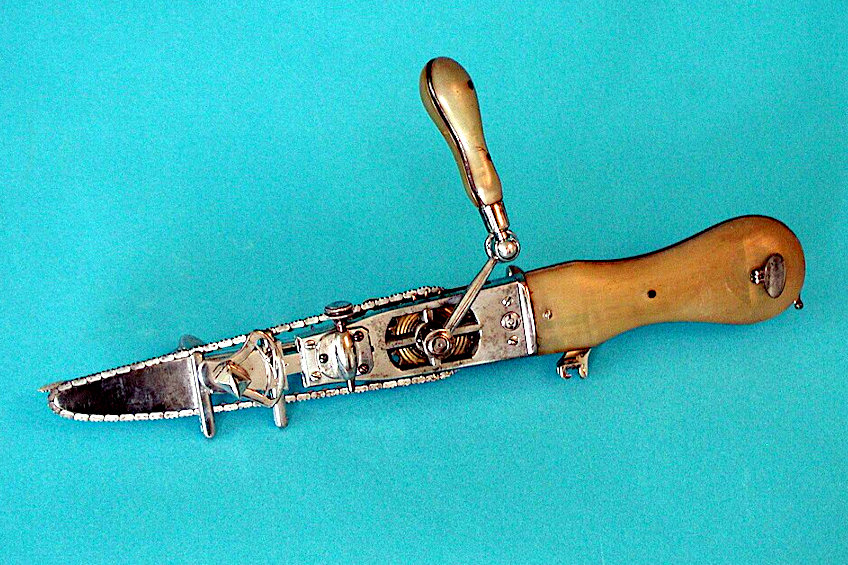 Bernard Heine’s Osteotome; Sabine Salfer, Public domain, via Wikimedia Commons
Bernard Heine’s Osteotome; Sabine Salfer, Public domain, via Wikimedia Commons
You could compare the internal mechanics of the osteotome to the hand-crack mixer you would find in your kitchen drawer. This fundamental principle of this device (a toothed chain being turned over a set of gears) would lay the foundation for its modern counterpart, and instead of being used to cut people, it would be used to cut wood and even masonry.
The Drag Saw (1882)
The drag saw is something of an iconic predecessor to the modern chainsaw in that it’s been photographed in use and many well-preserved examples can be found in museums all around the world. The drag saw is massive and was primarily used to fall and section off large species of trees like the American redwood. It would take two men to operate this machine, but it would make quick work of large and small trees alike despite its spotty reliability record. That being said, these machines were quite new at the time and designers were limited by the technology and materials available to them, so it’s worth giving credit where credit is due.
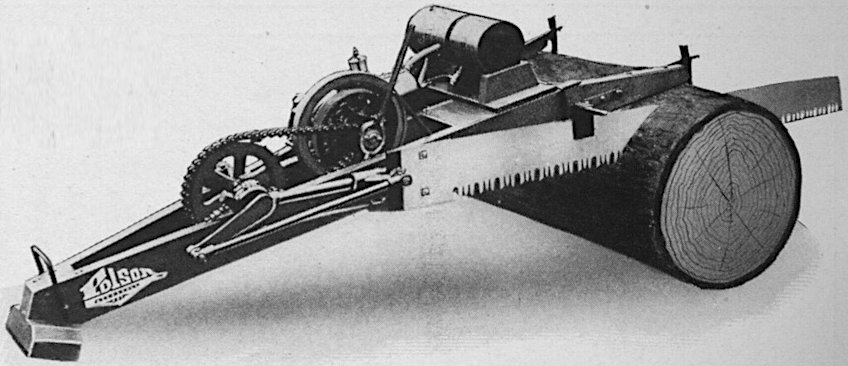 Polson Implement Company Drag Saw photographed 1917; Seattle Public Library, Public domain, via Wikimedia Commons
Polson Implement Company Drag Saw photographed 1917; Seattle Public Library, Public domain, via Wikimedia Commons
Drag saws were popularized during the Second World War as they allowed workers to cut the time needed to section off a tree in half, and they didn’t need a team of people to cut up a single tree. The more drag saws you had the less time you spent readying your wood for transport, increasing your production output and by extension your profit over time.
The drag saw did not have a chain like modern chainsaws, instead, it relied on a single-toothed blade that would move back and forth in a reciprocating motion to cut through wood. However, this motor-driven saw would eventually lead to the creation of the running toothed chain that evolved into the modern chainsaw, making it an important predecessor.
The addition of any kind of motor to this device would take several decades and several more to ensure that it could be used by one person reliably. Considering its humble beginnings it’s amazing to see just how far the chainsaw has come, as just like the internal combustion engine it took the work of many hard-working innovators to see the potential of this relatively simple device.
The Endless Chainsaw (1926)
The endless chainsaw was the name given to the first electric chainsaw. This was a heavy model and had to be wheeled around and operated by two people to ensure a proper cut. Its inventor Samuel J Bens was the first to file a patent, and Andreas Stihl would later patent an improved version and put this model into production in the year 1926. This saw was quite large and was capable of making both vertical and horizontal cuts on entire trees. This meant that if you had one of these you could both fell and section off an entire tree with little to no issues, aside from transporting your lumber.
This saw would also have a replaceable chain which was driven by a number of gears and pulleys to provide adequate cutting speed, which was quite a good use of mechanical advantage outside of automobile transmissions for the time.
However, even in the patent itself, Samuel does mention that this was simply an improvement on existing chainsaws, although mostly distinct. Unlike modern electrical chainsaws that have portable power cells, this one needed to be plugged into a power supply, which wasn’t always a user-friendly feature. Thankfully, this chainsaw would become smaller, simpler, lighter, and more portable over time thanks to new materials and engineering techniques being discovered.
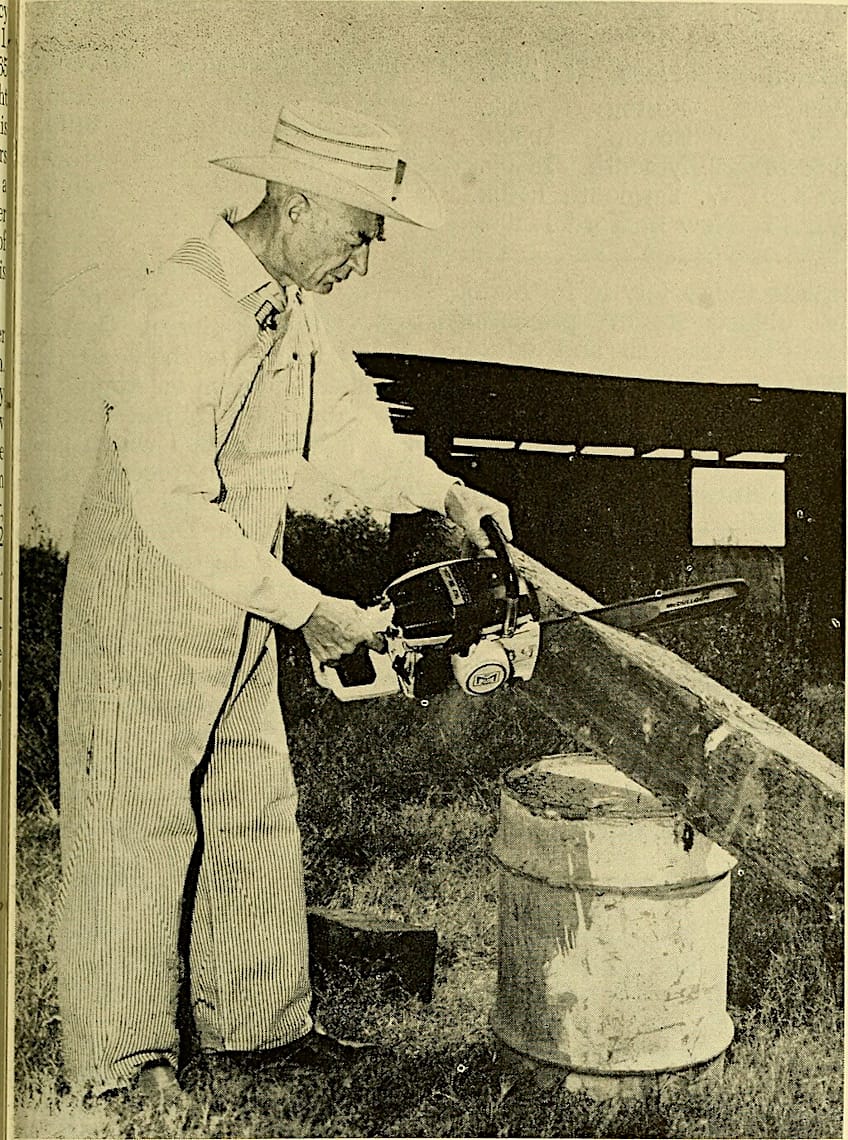 W. B. Burkett, vice-president of engineering at McCulloch Corporation demonstrating the world’s first electric-starting chainsaw in 1936; Internet Archive Book Images, No restrictions, via Wikimedia Commons
W. B. Burkett, vice-president of engineering at McCulloch Corporation demonstrating the world’s first electric-starting chainsaw in 1936; Internet Archive Book Images, No restrictions, via Wikimedia Commons
What Prompted the Development of the Chainsaw?
The chainsaw wasn’t really one invention. Like most complex machinery it is the culmination of many different types of technology that have been developed over many years. Once they reached a certain point of development enterprising individuals saw they could be combined to form a new device, which itself would be innovated upon as time progressed.
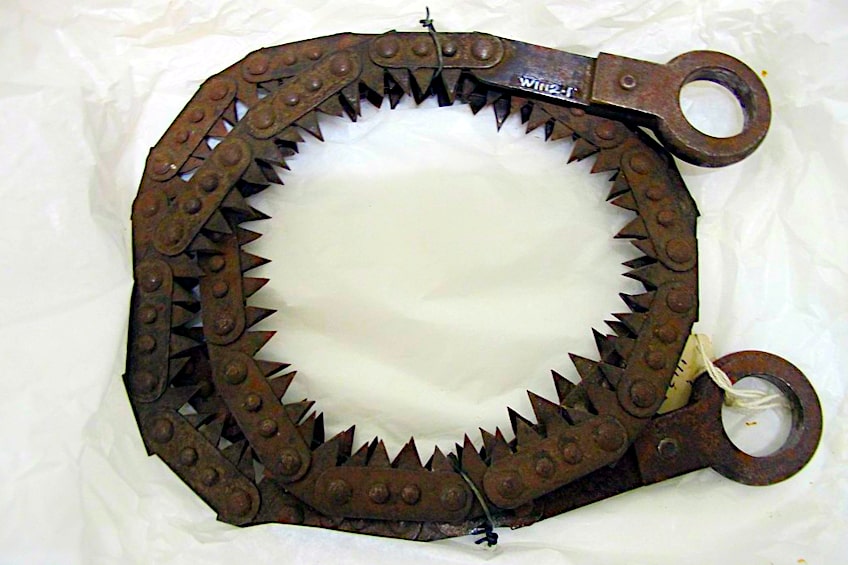 Manually operated metal segmented chain blade with metal loops for attaching wooden handles manufactured by Peugot (1929); Auckland Museum, CC BY 4.0, via Wikimedia Commons
Manually operated metal segmented chain blade with metal loops for attaching wooden handles manufactured by Peugot (1929); Auckland Museum, CC BY 4.0, via Wikimedia Commons
The first mechanical chainsaw was essentially a hand crank saw that used gears and mechanical advantage to produce enough force to cut through flesh and bone. This basic premise was enough to stir the imagination of those who witnessed it, after all, with enough power and a strong enough chain, it could theoretically cut through many materials. Unfortunately, every generation is limited by the technology of their time. Therefore, it was up to the next generation to see how new materials, manufacturing techniques, and even breakthroughs in physical sciences could benefit this simple machine.
Mechanical innovation eventually lead to the internal combustion engine and electrical engine being integrated into the chainsaw design.
That being said, necessity is often the mother of invention, and the (arguably) primary reason that chainsaws saw this constant stream of improvements was a response to a need in society. Machinery is needed to save lives and improve production during war times, and when those wars were over, we were left with many new devices and concepts to fiddle around with.
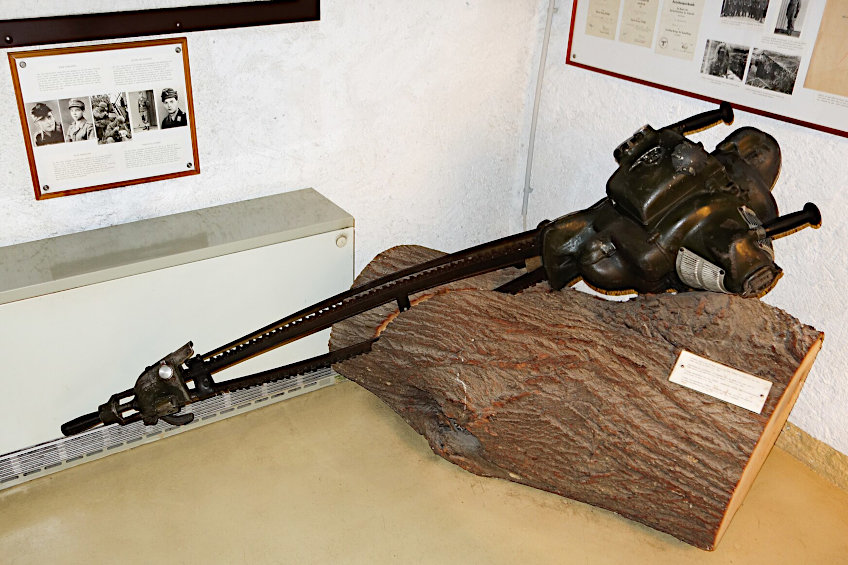 Chainsaw used at the Battle of the Bulge (16 Dec. 1944 – 25 Jan. 1945); Thomas Quine, CC BY 2.0, via Wikimedia Commons
Chainsaw used at the Battle of the Bulge (16 Dec. 1944 – 25 Jan. 1945); Thomas Quine, CC BY 2.0, via Wikimedia Commons
The chainsaw is one of many inventions whose development can be traced throughout history, and is a great illustration of what we are capable of producing as a species when we work together. What does the future hold for the chainsaw? We don’t know, but considering how far it has come in a relatively short period of time, probably something significant.
Now you know why the chainsaw was invented and how it has developed into the tool we know today. Like many tools throughout history, chainsaws have come a long way since their intended function, and even though their history is quite a brutal one, modern chainsaws are commonly used to save lives and preserve wildlife, which we think is a nice end to the story of this incredible machine.
Frequently Asked Questions
Who Invented the Chainsaw?
Have you ever wondered who invented the chainsaw? The first saw to feature a bladed chain was invented by Bernhard Heine, a German doctor who named the device osteotome. The cutting function meant that patients undergoing orthopedic surgery would not have to endure the impact of a hammer and chisel, while protective guards minimized the risk of soft-tissue damage. Heine’s device was based on a flexible saw first developed by John Aitken and James Jeffray that was used to perform symphysiotomies (widening the pubic cartilage).
How Deep Can a Chainsaw Cut?
Chainsaws are renowned for their ability to cut fast and deep, but are there limits to how deep a chainsaw can cut? Gas-powered chainsaws are capable of cutting anywhere between 12 and 16 inches into various materials, but hydraulic chainsaws used on masonry are capable of cutting up to 24 inches.
Is a Chainsaw a Good Weapon?
Chainsaws are often depicted as an ideal weapon in popular culture, but does this translate to reality? Well, chainsaws are capable of cutting through flesh and bone, but doing so consistently will likely cause the chainsaw to jam quite quickly. This could cause irreparable damage to both the engine and sprockets, depending on the size and power of your chainsaw.
What Is a Good Size Chainsaw for Home Use?
While chainsaws are primarily seen as trade tools, it doesn’t hurt to keep one around, especially if you live in a secluded and densely wooded area and need to cut through thick brush. What is a good chainsaw size to keep around then? Generally, any chainsaw between six and 20 inches should serve you well, regardless of whether it is electric or gas-powered.

I have been into woodworking since 2005 and woodturning since 2011. Because of my love for wood and woodworking, I started woodhappen.com to teach other enthusiasts about how to finish and seal wood, the best woodworking tools, the different types of wood, and everything else related to woodworking! Read more about me here.

